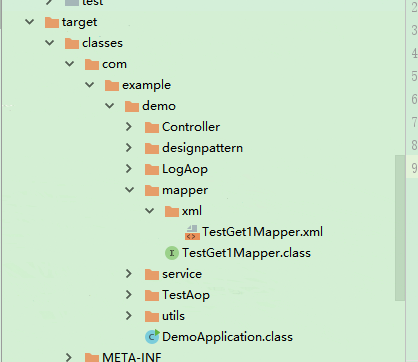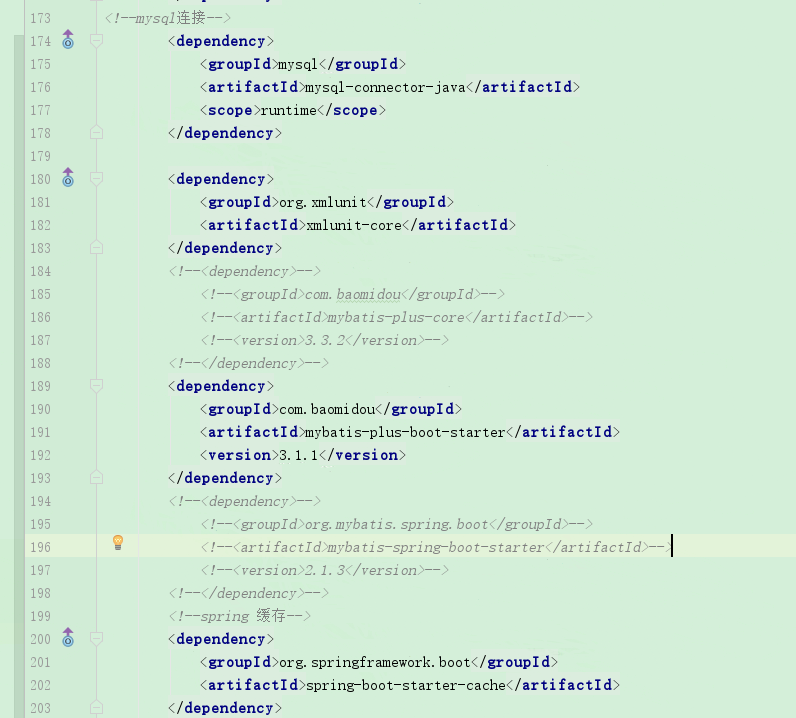Error message:
The incoming Table Format Data Stream (TDS) Remote Procedure Call (RPC) protocol stream is incorrect. Too many parameters were provided in this RPC request. The maximum should be 2100
Error analysis:
Due to too many SQL statement parameters spliced by mybatis
Solution:
Batch processing without mybatis
① Configuration file applicationContext-mybatis.xml
<!-- Solving mybatis batch insert -->
<bean class="org.mybatis.spring.SqlSessionTemplate" id="sqlSession">
<constructor-arg name="sqlSessionFactory" ref="sqlSessionFactory" />
<constructor-arg name="executorType" value="BATCH" />
</bean>
②service import
@Autowired
private SqlSessionTemplate sst;
③ The self encapsulated method was used in the service for batch insert
public Boolean insert(List<PDA_JWL_INTERFACE_H> inList,String zyh){
// Get a new session with mode BATCH and auto-commit set to false
// If auto-commit is set to true, it will not be possible to control the number of commits and will instead be submitted uniformly at the end, which may lead to a memory overflow
SqlSession session = sst.getSqlSessionFactory().openSession(ExecutorType.BATCH,false);
moMapper= session.getMapper(MOMapper.class);
Map<String,Object> cc = new HashMap<>();
try {
for (PDA_JWL_INTERFACE_H in : inList) {
moMapper.insert(in);
}
cc.put("zyh", zyh);
moMapper.call(cc);
session.commit();
//Clearing the cache to prevent overflow
session.clearCache();
return true;
} catch (Exception e) {
session.rollback();
return false;
} finally {
session.close();
}
}
End 9315;
/**
* submit
*/
@RequestMapping(value="/tj", method = RequestMethod.POST,produces="application/json;charset=utf-8")
@ResponseBody
public Map<String,Object> tj(@RequestBody List<PDA_JWL_INTERFACE_H> tList,HttpServletRequest req){
//Encapsulating the return value of a map
Map<String,Object> m = new HashMap<>();
//Decryption Certification
String token = req.getParameter("token");
String tk = MD5Utils.encode(CREKEY);
System.out.println(tk);
if(!token.equals(tk)){
m.put("flag",Code.FLAG1.getIndex());
m.put("erroCode", Code.ERROR1.getIndex());
m.put("content", "");
return m;
}
//Store the data to be placed in the intermediate table
List<PDA_JWL_INTERFACE_H> inList = new LinkedList<>();
// Job number, produced with UUID, unique number, distinguishes job type
//Long t1 = System.currentTimeMillis();
String zyh = UUID.randomUUID().toString();
try {
for (PDA_JWL_INTERFACE_H t : tList) {
PDA_JWL_INTERFACE_H in = new PDA_JWL_INTERFACE_H();
//Job number
in.setZYH(zyh);
// Order maker number: default current login ID (required, not shown)
in.setZDRH(t.getZDRH());
//Things type: default "Purchase Inbound" (required, not shown)
in.setSWLX(t.getSWLX());
//Supplier number: required, not shown
in.setGYSH(t.getGYSH());
//Supplier: The company number in the view is the same as the company number of this job
in.setGYS(t.getGYS());
//Company number: required, not shown
in.setGSH(t.getGSH());
//Warehouse number: required, not shown
in.setCKH(t.getCKH());
//Warehouse: the operator number in the view is the same as the current login ID
in.setCK(t.getCK());
//new warehouse number
in.setXCKH(t.getXCKH());
//new warehouse
in.setXCK(t.getXCK());
//claimers
in.setLYR(t.getLYR());
//new warehouse position number
in.setXKWH(t.getXKWH());
//new storage position
in.setXKW(t.getXKW());
//Purchase Type:Required
in.setCGLX(t.getCGLX());
//Purchaser: required
in.setCGR(t.getCGR());
//Stockroom number: required, not displayed
in.setKWH(t.getKWH());
// Warehouse location: the warehouse number in the view is the same as the warehouse number of this job
in.setKW( t.getKW());
//line number: automatically generate a non-repeating serial number for this job. app-side pass over
in.setHH( t.getHH());
//Item number: return the corresponding value directly after inputting the item number, which needs to be matched exactly. The company number and item type in the view are the same as the company number and purchase type of this job. (required)
in.setWPH(t.getWPH());
//Item name: display, not editable
in.setWPMC(t.getWPMC());
//spec: show, not editable
in.setGG(t.getGG());
//units: display, non-editable
in.setDW(t.getDW());
//production lot number: popup selection after entering keyword.
in.setSCPH(t.getSCPH());
//Grade: default First class (required)
in.setDJI(t.getDJI());
//Quantity: required
in.setSL(t.getSL());
//Number of pieces: Not required
in.setJS(t.getJS());
//Unit price: non-required, if it is empty or 0, only prompted, no control over subsequent operations.
in.setDJ(t.getDJ());
//amount: unit price*quantity, not editable.
in.setJE(t.getJE());
//Currency code: default RMB (required)
in.setBBM(t.getBBM());
//Tax rate: default 0.17 (required)
in.setSLV(t.getSLV());
// First level sector
in.setYJBM(t.getYJBM());
//Inventory source
in.setPDLY(t.getPDLY());
//lot number
in.setPH(t.getPH());
inList.add(in);
}
Boolean flag = moService.insert(inList,zyh); if(!flag){ int i = 1/0; }else{ /*Long t2 = System.currentTimeMillis(); System.out.println(t2-t1);*/ }
} catch (Exception e) {
e.printStackTrace();
m.put("flag",Code.FLAG1.getIndex());
m.put("erroCode", Code.ERROR2.getIndex());
m.put("content", "");
return m;
}
m.put("flag",Code.FLAG.getIndex());
m.put("erroCode", "");
m.put("content", "");
return m;
}
⑤ Xxmapper.xml in the mapping file
<!-- submit -->
<insert id="insert" parameterType="PDA_JWL_INTERFACE_H" >
insert into PDA_JWL_INTERFACE_H (
ZYH,ZDRH,SWLX,SWRQ,GYSH,GYS,GSH,CKH,CK,XCKH,
XCK,LYR,XKWH,XKW,CGLX,CGR,KWH,KW,HH,WPH,
WPMC,GG,DW,SCPH,DJI,SL,JS,DJ,JE,BBM,
SLV,YJBM,PDLY,PH
) values
(#{ZYH}, #{ZDRH}, #{SWLX},getdate(), #{GYSH},
#{GYS}, #{GSH},#{CKH}, #{CK},#{XCKH},
#{XCK},#{LYR},#{XKWH},#{XKW},#{CGLX},
#{CGR}, #{KWH},#{KW}, #{HH}, #{WPH},
#{WPMC}, #{GG},#{DW}, #{SCPH}, #{DJI},
#{SL}, #{JS},#{DJ}, #{JE}, #{BBM},
#{SLV},#{YJBM},#{PDLY}, #{PH})
</insert>









